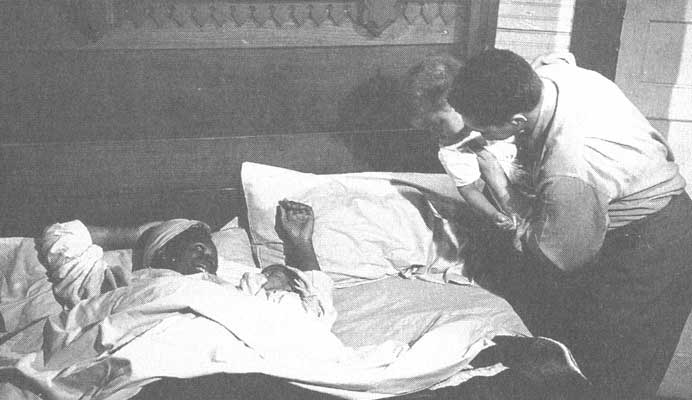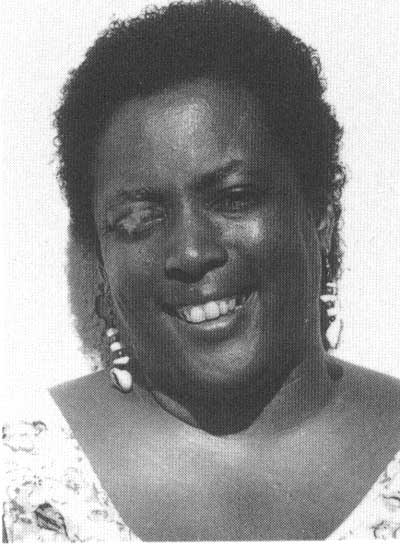
Listen to Me Good
The Life Story of an Alabama Midwife
Margaret Charles Smith and Linda Janet Holmes
“Margaret Charles Smith, a 91-year-old midwife, and Linda Janet Holmes, a long-time friend and historian of Alabama’s midwives, have combined their talents to present a fascinating and powerful account of the career of Alabama’s oldest living midwife. Born in Greene County, Alabama, in 1906, Margaret Charles Smith attended nearly 3,000 births between 1949, when she received her midwife permit, and 1981, when she attended her last birth. During her distinguished midwifery career, she never lost a mother and rarely lost a baby. . . . In assessing her last days as a midwife, Smith concluded, ‘You could count on midwives. They took care of everybody, no matter what.’”—Journal of the American Medical Association
 “Smith’s dedication, strong religious faith, and
dignity are evident throughout this tribute to a tradition of self-care
and community support. This fascinating oral history will interest students
of the health sciences, women’s studies, and history, as well as general
readers. Highly recommended for all collections.” —Library Journal
“Smith’s dedication, strong religious faith, and
dignity are evident throughout this tribute to a tradition of self-care
and community support. This fascinating oral history will interest students
of the health sciences, women’s studies, and history, as well as general
readers. Highly recommended for all collections.” —Library Journal
Margaret Charles Smith, a ninety-one-year-old Alabama midwife, has thousands of birthing stories to tell. Sifting through nearly five decades of providing care for women in rural Greene County, she relates the tales that capture the life-and-death struggle of the birthing experience and the traditions, pharmacopeia, and spiritual attitudes that influenced her practice. She debunks images of the complacent southern “granny” midwife and honors the determination, talent, and complexity of midwifery.
 Fascinating to read, this book is part of the new
genre of writing that recognizes the credibility of midwives who have emerged
from their own communities and were educated through apprenticeship and personal
experience. Past descriptions of southern black midwives have tended to
denigrate their work in comparison with professional established medicine.
Believed to be the oldest living (though retired) traditional African American
midwife in Alabama, Smith is one of the few who can recount old-time birthing
ways. Despite claims that midwives contributed to high infant mortality rates,
Smith’s story emphasizes midwives' successes in facing medical challenges and
emergencies.
Fascinating to read, this book is part of the new
genre of writing that recognizes the credibility of midwives who have emerged
from their own communities and were educated through apprenticeship and personal
experience. Past descriptions of southern black midwives have tended to
denigrate their work in comparison with professional established medicine.
Believed to be the oldest living (though retired) traditional African American
midwife in Alabama, Smith is one of the few who can recount old-time birthing
ways. Despite claims that midwives contributed to high infant mortality rates,
Smith’s story emphasizes midwives' successes in facing medical challenges and
emergencies.
Margaret Charles Smith was educated in rural Alabama, where she acquired a fifth-grade education by attending school the three months out of the year it was held. She spent most of her childhood working in the fields. She learned her calling by becoming an apprentice to an older midwife, and by attending training courses. Her own experience while growing up of inadequate schooling, sexual abuse, racial discrimination, and sex discrimination, as well as her adult experiences of marriage and pregnancy, made her sensitive to the hardships of others. Smith describes her experiences as a midwife, and also her relationships—both of collaboration and of conflict—with local doctors, nurses, and public health officials, relationships that were often further complicated by the segregated order of the Old South.
 Although Alabama
passed a law in 1976 banning lay midwifery, Smith’s story illustrates the
historical importance and power of the midwife in southern black communities. In
addition to the general reader, scholars of women’s studies, women’s health,
public health, black studies, sociology, oral history, and southern history will
all find something of interest and of lasting value in this vivid account of
Smith’s life.
Although Alabama
passed a law in 1976 banning lay midwifery, Smith’s story illustrates the
historical importance and power of the midwife in southern black communities. In
addition to the general reader, scholars of women’s studies, women’s health,
public health, black studies, sociology, oral history, and southern history will
all find something of interest and of lasting value in this vivid account of
Smith’s life.
Margaret Charles Smith has spoken extensively
about her years as a midwife at national midwifery conferences, folk festivals,
and women’s health programs, and her life has been celebrated in numerous
newspapers and midwifery publications. In 1985 the Eutaw City Council proclaimed
May 11th “Margaret Charles Smith Day,” and she became the first black person
to receive the keys to the city. She continues to live in Eutaw, Alabama,
with her two sons. Linda Janet Holmes, a former journalist, currently
works for the New Jersey Department of Health, Division of Family Health
Services, in Trenton. She is a member of the National Women’s Health Network
Board, and the New Jersey Women and AIDS Network Board.
| 1996. 200 pp., illus. 5 ½ x 8 ½ | |
| $24.95 paper 978-0-8142-0701-7 | Add paperback to shopping cart |
| $24.95 PDF ebook 978-0-8142-8178-9 | Add PDF ebook to shopping cart |
| Women, Gender, and Health |


